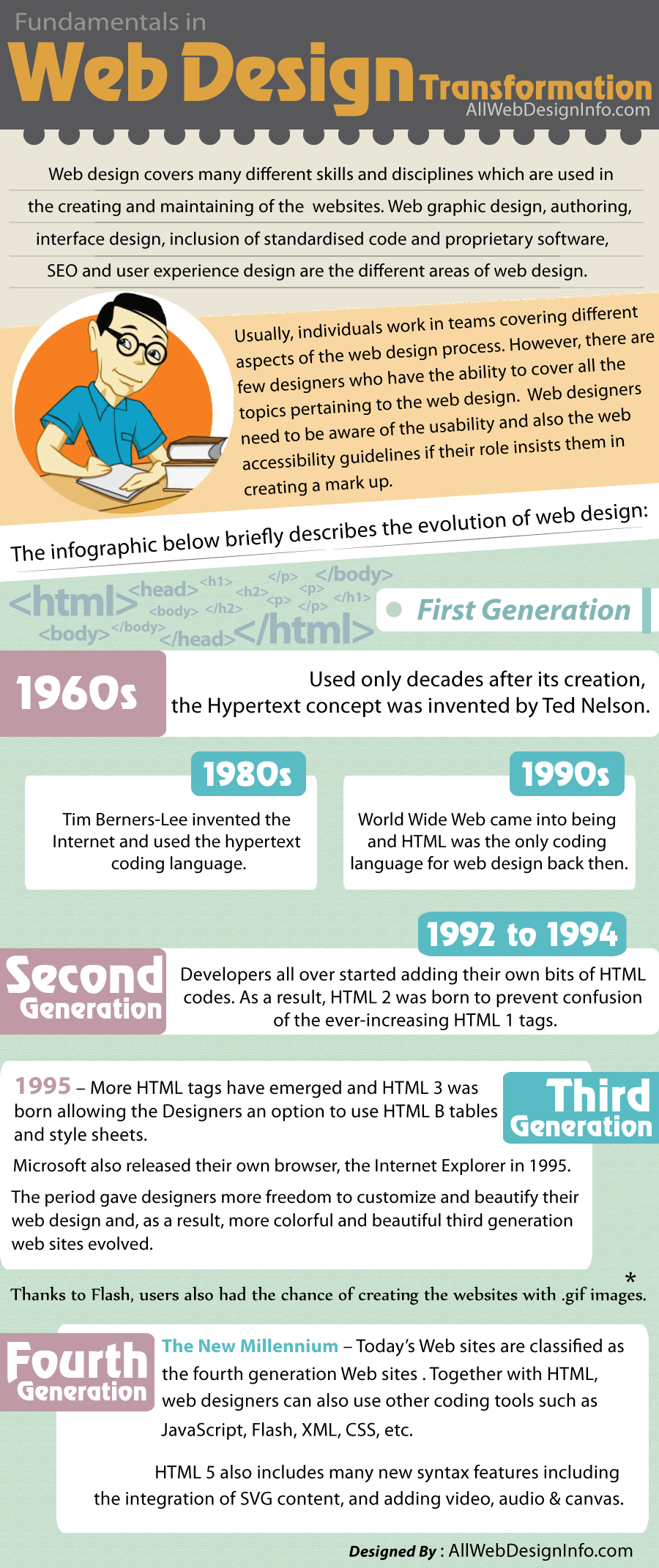When I first started using Twitter, I was set on following a bunch of web designers and developers that I thought shared great content overall. It was the beginning of my now 4 year long Twitter marathon. I still very much look forward to what those people have to share to keep me updated. My following has grown substantially since then, so I have to choose which tweets to follow more carefully so I don’t get stuck in front of the screen checking out great tutorials, solutions and news all day. For people who have just started with programming or designing, it can seem like the Internet has always been a place full of animated pictures and straight forward user interfaces, but nothing could be further from the truth. The Internet’s web design history and transformation is quite fresh actually.
In a new infographic from All Web Design Info, we get to take a look at web design history and how the Internet has evolved since it was first introduced to us. The World Wide Web got introduced to the general public as late as in the 1990s. It feels like it’s been a lot longer since I started using this highly creative way of sharing, innovating and connecting. However, the Internet’s web design history is really fresh compared to many other things we are still using today.
HTML has become the backbone of the Internet itself, and it is apparently in its fourth generation right now. Many new and more effective languages have been added since HTML became popular, but it still serves as one of the main keys to creating a visually stunning and user friendly website. The second generation of the HTML language was introduced in order to stop confusion about the tags available. People had started to add their own tags, so between 1992 and 1994 the second generation of HTML was put together to unify the language and make it more simple.
Today, HTML 5 is becoming more and more popular, and it looks like many of the features that previously we were only able to include through Java, Javascript and so forth have been injected into the HTML 5 batch enabling more creativity without having to involve other languages. This ultimately makes the work easier for any web developer and designer. Only the collective developers and designers know what web design history will be written in the future since they are the ones who together invent features and approaches that in the future will require simpler implementations.
Web Design History & Transformation Infographic
(Click To Enlarge)
Via: [Love Infographics]

COMMENTS